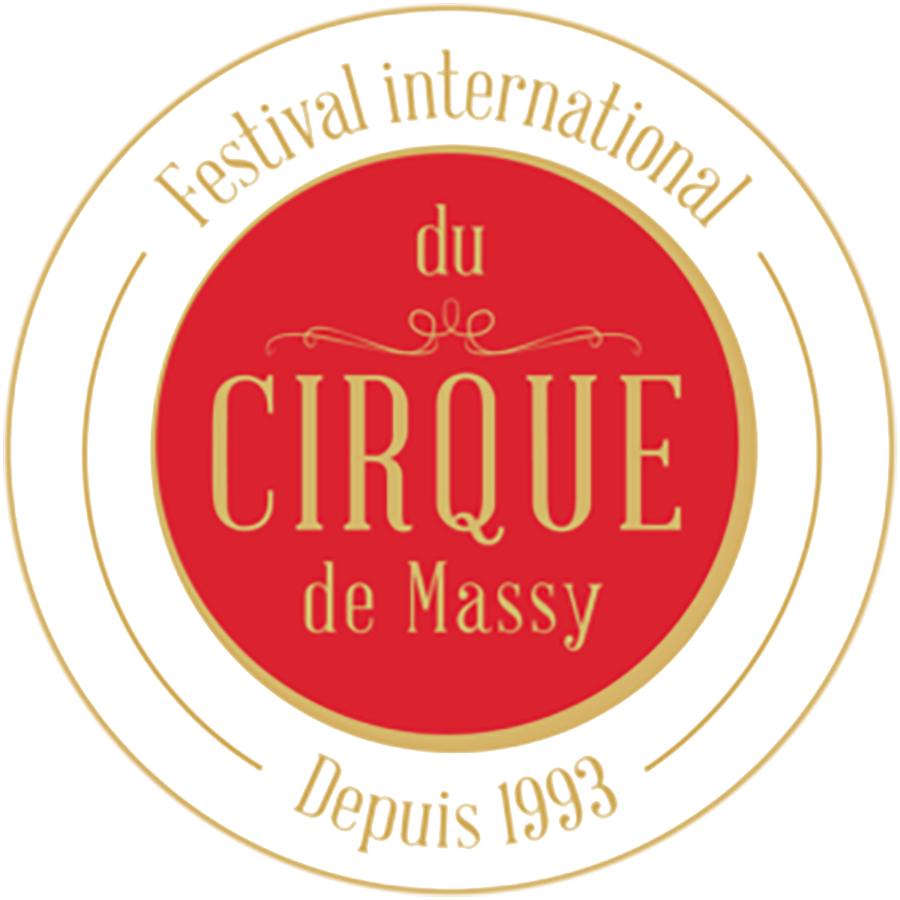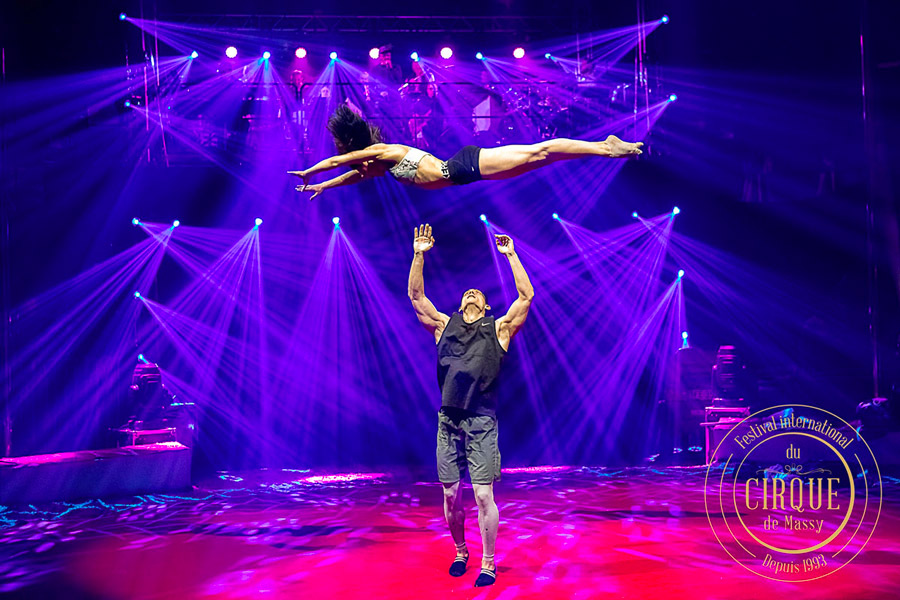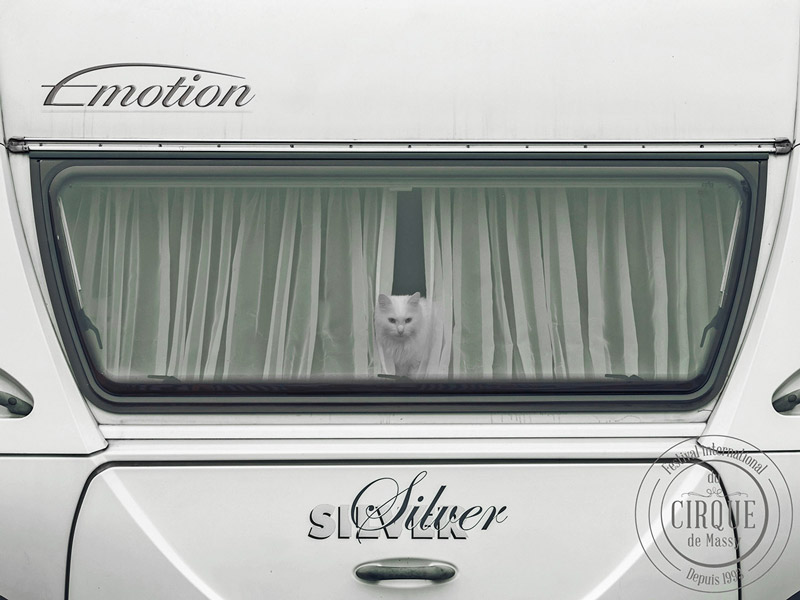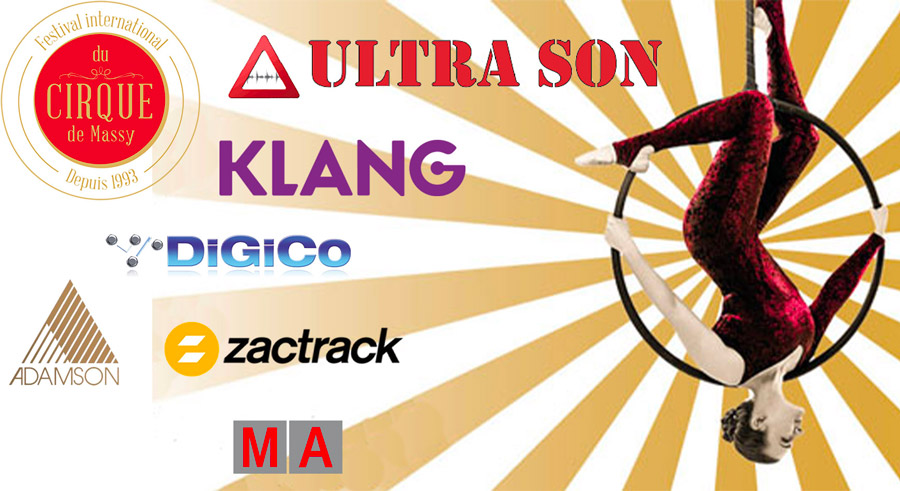After the interruption due to Covid-19, the 28th edition of the Massy International Circus Festival was held under a 48-meter diameter big top.
With 500 fewer seats than its maximum capacity of 2,500 spectators, this international event was a sell-out despite the absence of the troupes from China and Russia due to the pandemic, and the now restricted use of animals in the acts.
What has also changed is the use of innovative technologies typical of touring systems. Maxime Polak, heading up his rental company Ultra Son (Ultra Sound – and they do a lot more than just sound, as you’ll see), tells us about his work and his tools. The very least we can say is that it’s pretty athletic, as the circus demands!
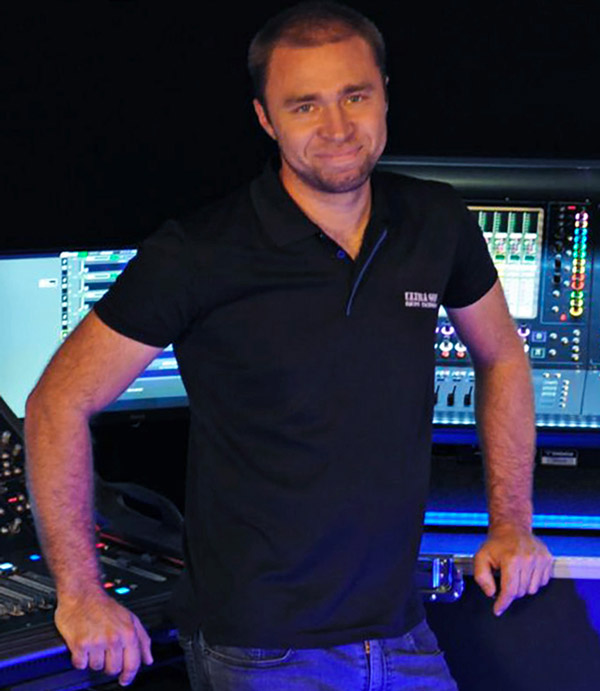
The first nice surprise is that the orchestra uses an immersive Klang mix and the musicians manage their monitor mixes autonomously.
SLU : Why adopt an immersive matrix as powerful as Konductor for a circus?
Maxime Polak : Convenience. There was neither the space nor the budget to have a monitor mixer, so we let the musicians manage their own sound.
That’s why we brought in the Kontroller remote controllers, it’s more cost-effective than using an American brand of personal monitor management, with the added possibility of extending the spatialization, or even feeding a pair of wedges, thanks to the two XLRs present on each remote.
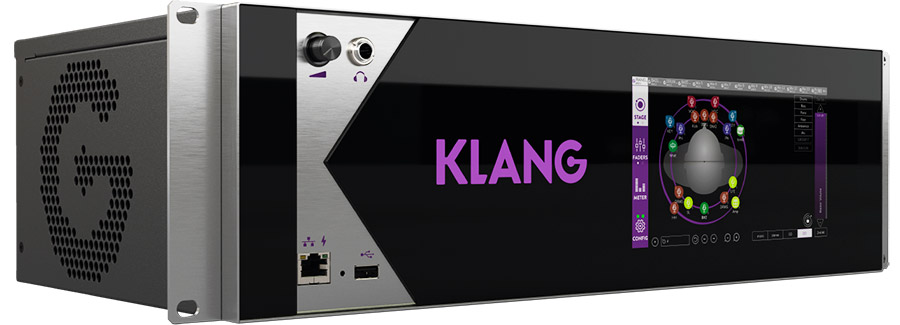
SLU : Some musicians couldn’t do without a floor monitor?
Maxime Polak : Two out of ten, but it doesn’t make any difference, they still have control over the groups – drums, bass, keyboards, brass, and some sources of their choice – but they obviously don’t have the possibility of immersive sound. There are four possible choices with the matrix: mono, stereo and two immersive modes.
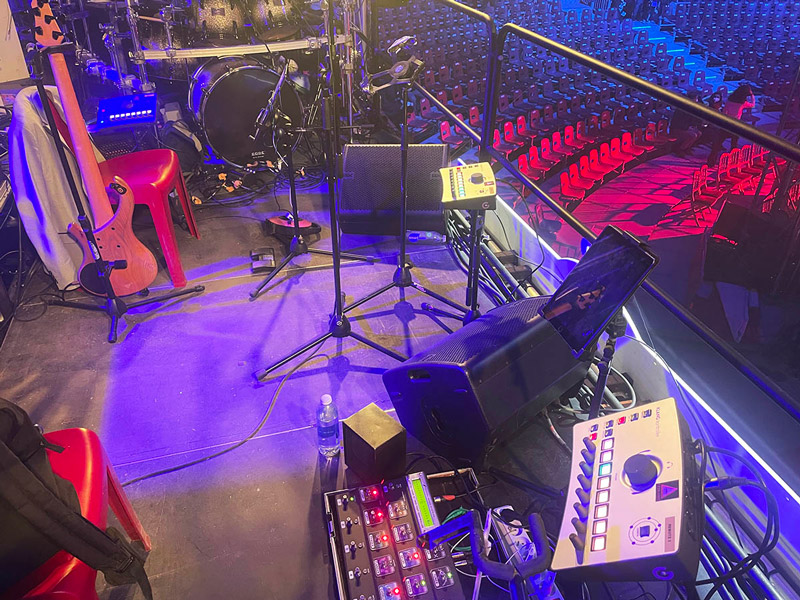
SLU : How is the mix organized on the Kontroller?
Maxime Polak : Up to 24 signals can be assigned to the musicians, each of whom has control over the levels and spatial positioning.
These 24 signals can be routed into eight groups, each with a color-coding and quick access.
SLU : And how did the immersive aspect get into this?
Maxime Polak : Since we got to spend some time with them for this Circus festival, once we were comfortable with their sound and their personal mixes, we opened up the immersive mix and they thought it was great because it really is very different from the usual stereo.
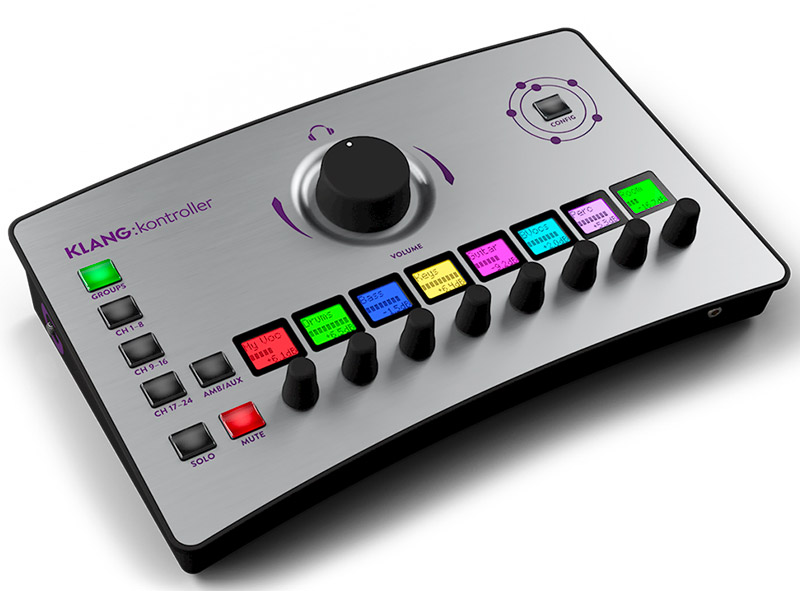
Already just having a “mixer” that allows them to adjust their monitors to their taste gives them a lot of freedom. You should also know that the distinction between sources thanks to their placement in three dimensions allows you to avoid pushing the volume too much in order to hear everything better.
Finally, the Klang algorithm finely manages the balance between the groups, with a simultaneous and inaudible lowering of the others when a group of instruments is selected, it’s a sort of “unmasking” instead of simply increasing the volume of what we want to hear better.
SLU : Is this a circus band?
Maxime Polak : No, they’re just a very good professional dance band, with a great brass section, and who often work for circuses during the winter, when the big open-air dances are not held. It’s the Jean Ribul Orchestra.
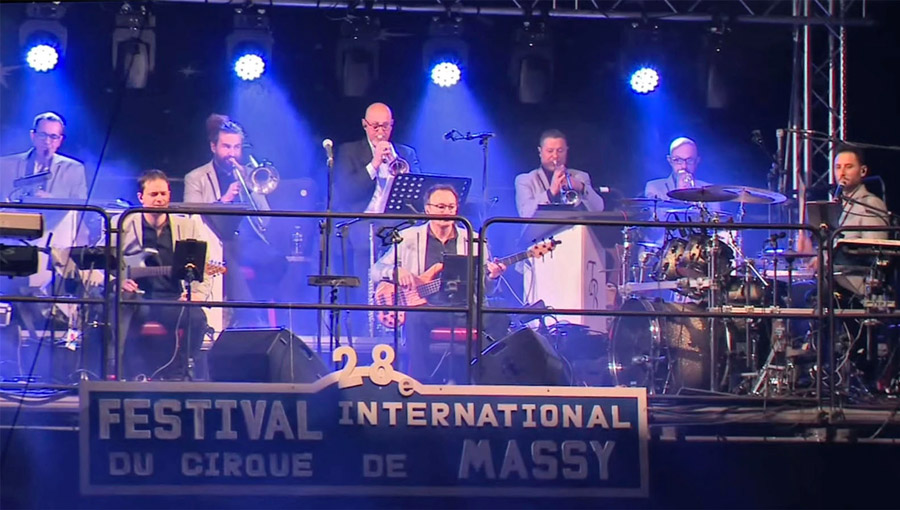
SLU : Do you keep the new matrix at front-of-house?
Maxime Polak : Yes, especially since it reduces the length of the connections and since I like to have everything at hand. A big advantage of this model is that the rear panel has three DMI slots for Dante, MADI or Optocore cards. Another advantage is that this 4-unit matrix is very powerful and doesn’t necessarily require a DiGiCo console, like the DMI Klang card does. I have some CL5s in my inventory at Ultra Son and I plan to use them!
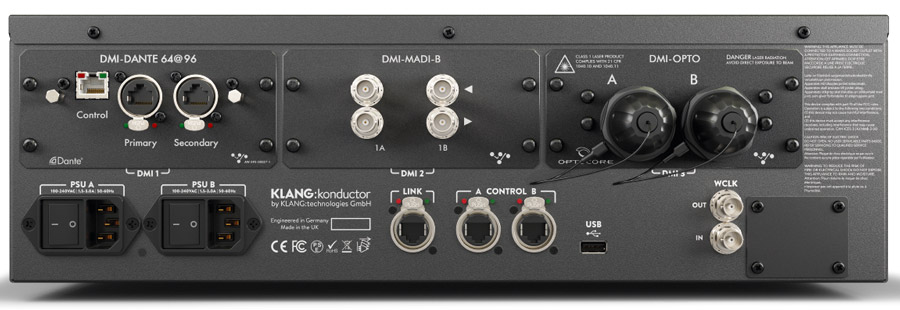
SLU : How many people can you keep happy with the matrix?
Maxime Polak : I can encode 16 different immersive stereo mixes with a latency of a quarter of a millisecond – in other words, virtually nothing. As each Kontroller is networked on the Konductor matrix and the latter is connected to my SD12, each modification made by a musician to one of the 64 signals – over which he has control of 24 – is visible in real time on the console. I can see my monitor levels change!
To be precise, the matrix supports 128 signals, but I chose to use a MADI card to connect it to 64, and that’s enough for me. Each of these 16 different immersive (or not) mixes is created with these 64 signals. Each Kontroller is given control over 24 of them and over eight groups. This programming is done beforehand. The musicians can therefore vary these eight stems (groups) and eventually get down into the 24 signals that are grouped in the eight stems.
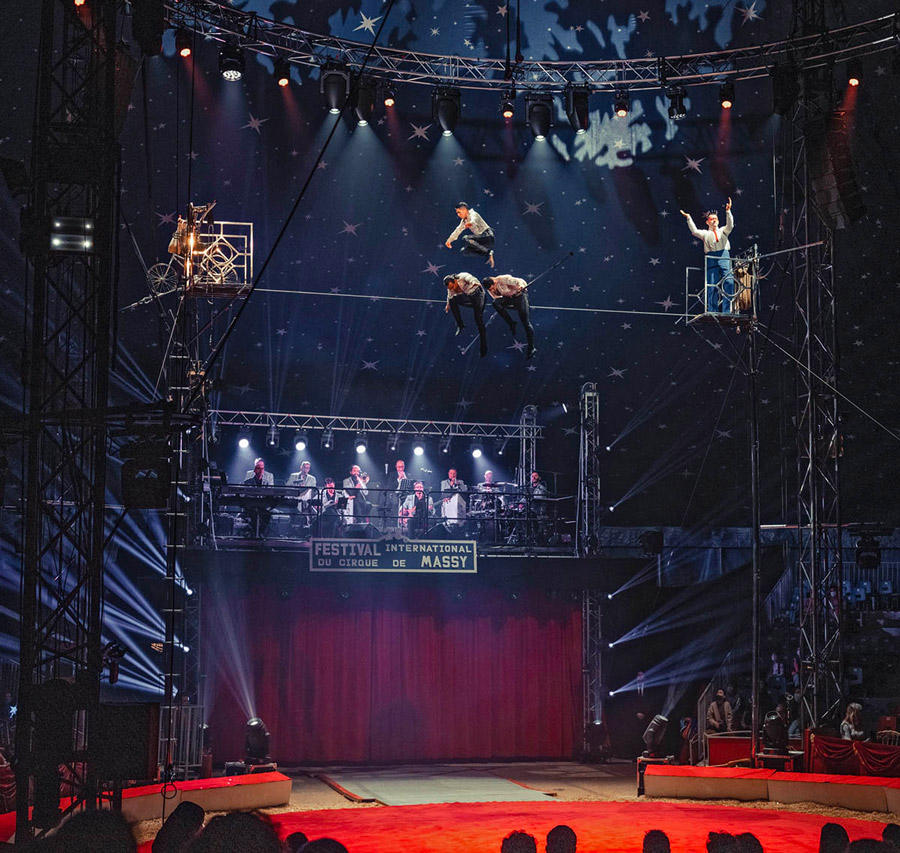
SLU : If one of the ten musicians gets confused, can you take over?
Maxime Polak : Yes, from the DiGiCo. With a console of another brand I would do it on the computer directly in the matrix. The integration of Klang with DiGiCo is, of course, complete. What is also convenient is that the snapshots of the SD12 enhance the controls of the Konductor, since they can also change levels for each number – and therefore for each circus act – and I record them. We agreed on this with the musicians after two days of rehearsals.
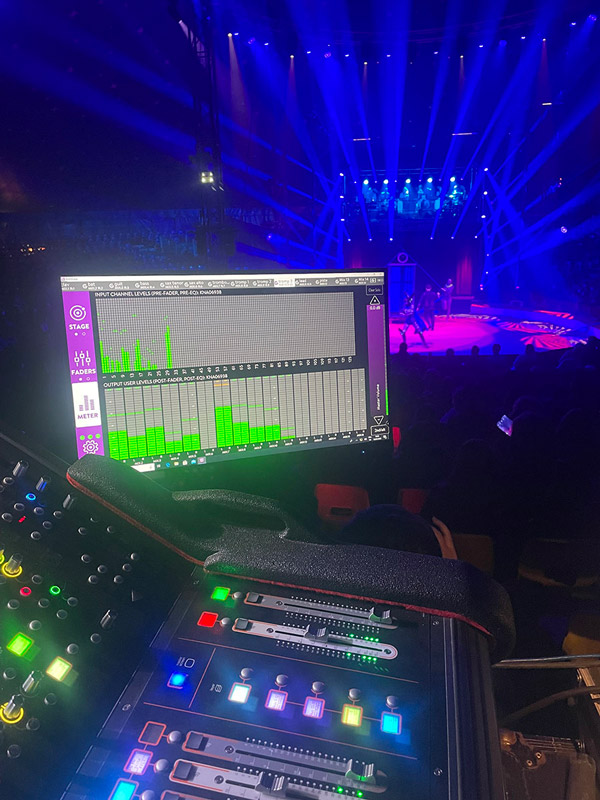
SLU : And if a musician gradually pushes the levels ?
Maxime Polak : I’ll play back this increase from snapshot to snapshot. It’s up to him to lower this or that instrument on the fly, or to lower the overall volume if it doesn’t suit him.
SLU : What PA are you using here?
Maxime Polak : Adamson S7 – two arrays of eight boxes each arranged to fire away from the band, and a six-box array that faces the FoH console, completing the almost 360° effect.
The three arrays are hung on a truss ring with the same diameter as the arena and that is rigged to the four main square truss columns that support the canvas. A large part of the lighting is also hung on this.
On the floor, Point 8s are used to illuminate the bottom of the stands, while the shadowy areas around the performers’ entrance are lit by MDC P12s. For the subs we are using S119s.
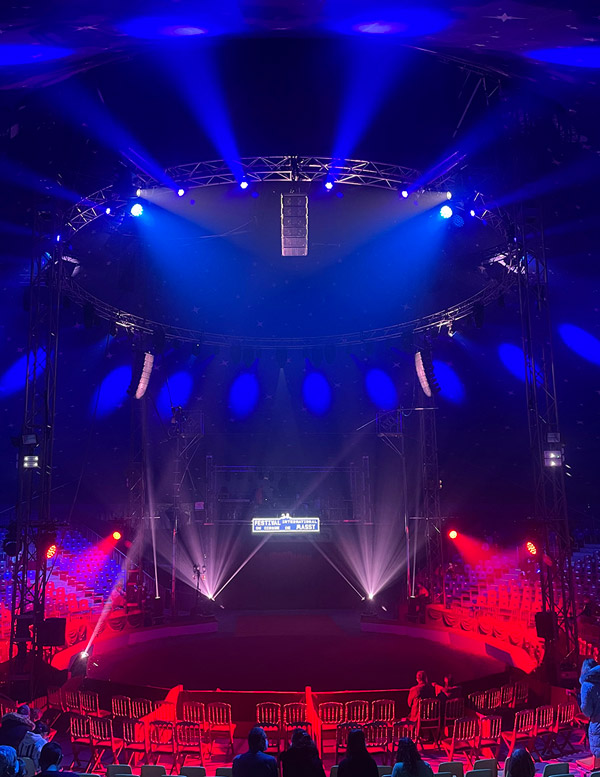
SLU : So, you mix the front, handle the monitors…
Maxime Polak : I also play the media from QLab, since many artists come in with specific music that they have worked on and that is integral to their act. I trigger them in OSC from the grandMA2.
SLU : ?!?
Maxime Polak : Yes, it’s easier if I do it myself, it is more precise. I programmed everything: lights as well as front-of-house and monitor sound, and I connected the DiGiCo to the grandMA2 in OSC. The SD12 communicates with the Klang matrix.
SLU : Everything is connected in a sort of show control…
Maxime Polak : In a way; except that I have a hand on anything that needs to be touched up and I know the show perfectly well, having programmed each number step-by-step in terms of mix, lighting and followspots. Everything is in the grandMA. When I say go, it goes!
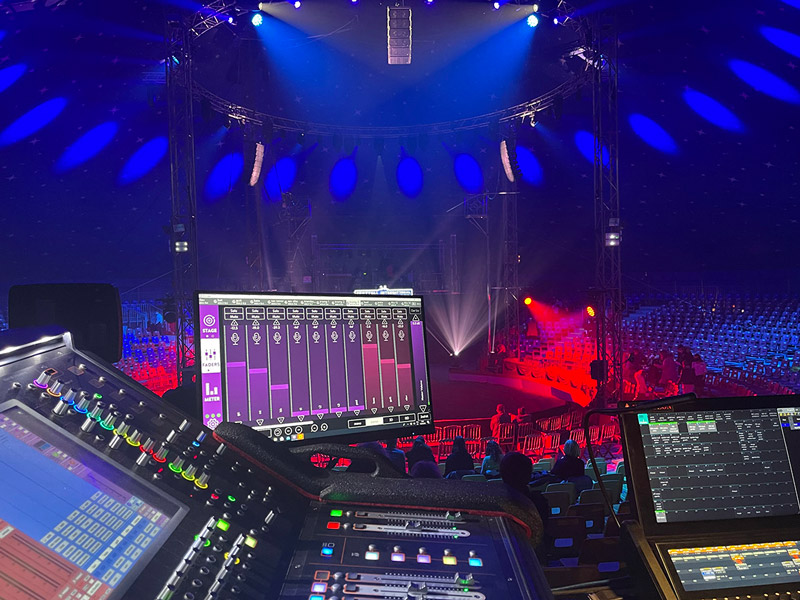
SLU : Let me guess: the followspots are automated, too (laughs)…
Maxime Polak : Yes of course, we got the Zactrack system from Axente and it works great (laughs), so…I’m all by myself! Of course, you have to set your anchors and specify them to the system, choose the moving heads that will be used as followspots, and then give each performer a tag, but after a few rehearsals, it works really well and it’s unbeatable in terms of reactivity.
I’ll give you an example. A clown who is supposed to make his entrance on the floor from stage-right, will appear at the top of the stands from stage-left. He’s a clown and it’s practically normal for him to give you this type of shot, and that’s no problem with this tracking technology! For this festival we chose Ayrton’s Ghibli and it also works very well.
We have the possibility to follow 24 tags with the same number of movers hanging around 360°, and we can choose the beam that will disturb the acrobats the least, typically from the side. With manned followspots it is far less flexible, at least in a circus, and those take away from the available seating.
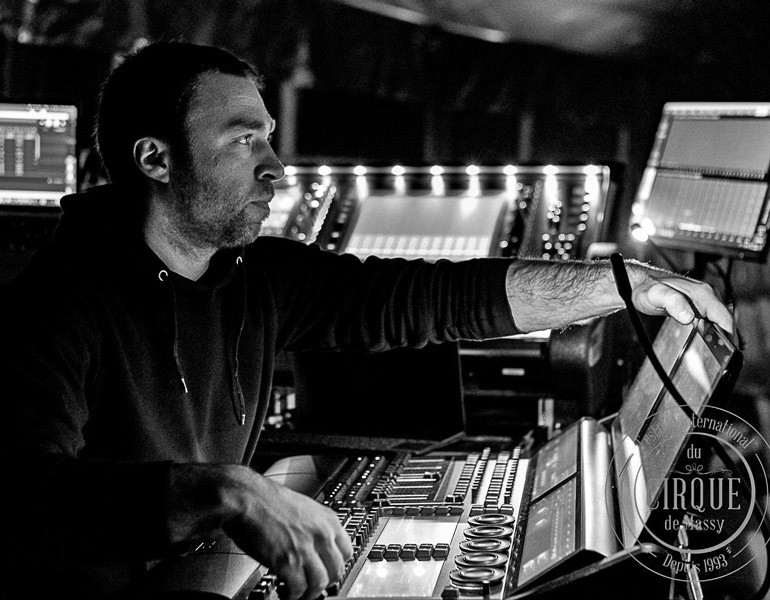
SLU : You were saying that the band is specialized in circuses, but your company Ultra Son seems to have quite a bit of know-how in this field too.
Maxime Polak : Yes, and that’s why we’ve learned to choose brands, technologies and models that allow us to work very efficiently and in small teams. The circus is not rolling in money. Of course, I am not alone on site, but in the control booth, yes.
Getting back to your question, our business is in touring, festivals and entertainment, the circus didn’t appeal to me at all, but then with a producer I did a little project that became bigger and bigger. As we were both seduced – I by the atmosphere of the circus and he by the technical renewal that we introduced – and since one job leads to another, we became quite well known in this market, even outside of France. For example, we are providing the technical support for the Girona Circus Festival in Spain.
SLU : Are you solid with your setup, if you lose the grandMA…
Maxime Polak : As much as I can be. There are UPS everywhere and I recently switched to fiber, I have a loop running with Ghost and I manage everything by testing each configuration at the warehouse first. In terms of the network, everything is redundant: on the console I have macros to disable the OSC, and MIDI to run on the fly and, if I lose the Klang, I have a pair of side-fills and a mix for the musicians.
SLU : How much time do you have to program, design and set up?
Maxime Polak : It’s a job that I start back at the shop. I can design quite freely, since the performers don’t have any specific ideas for the lights and even less for the sound. So even before setting up the tent, a large part of the lighting work is programmed, and the same goes for the sound. It’s a habit I’ve developed on tours to do all my lighting plans are setup and tested at the warehouse.
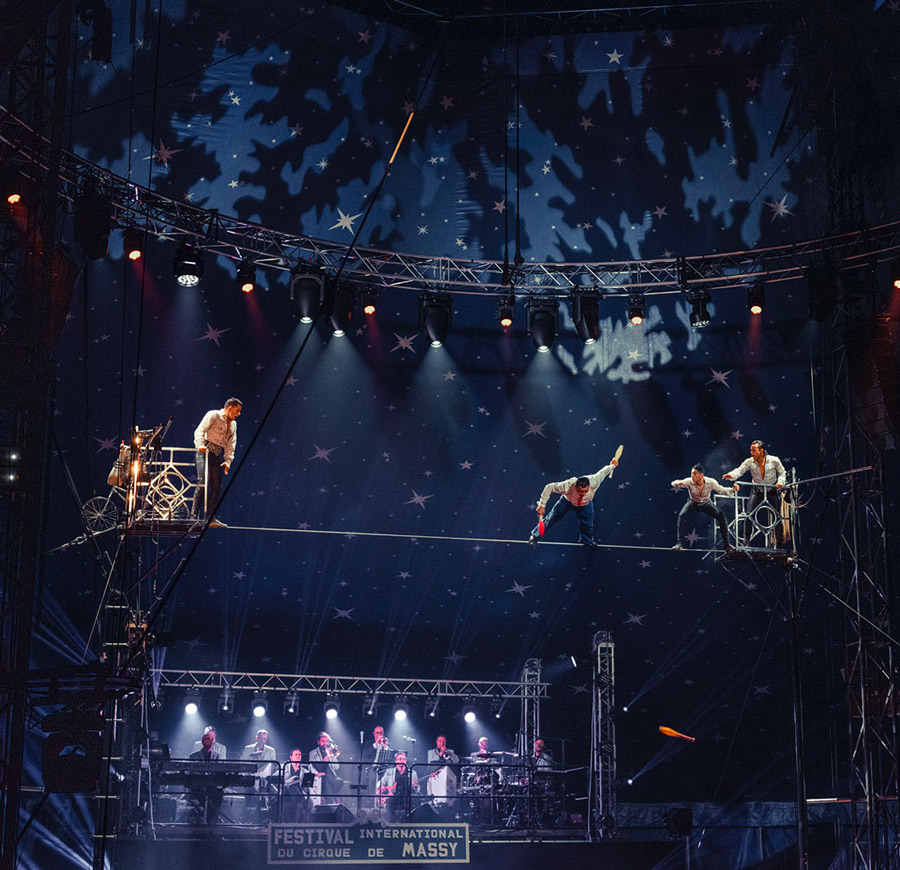
The same goes for the audio: as soon as I get the musicians’ patched, I get as far ahead as possible, especially since I discovered the Klang system, wired it up, programmed it and tested it before putting it back in the flight case. When we arrive at the circus, we have a semi truck and a half of gear, but everything is up in the air in one big day, with three people. This is because everything is ready. After that, we spend three days with the performers and since this year there are two shows, there were 40 of them. We don’t sleep much during this phase…
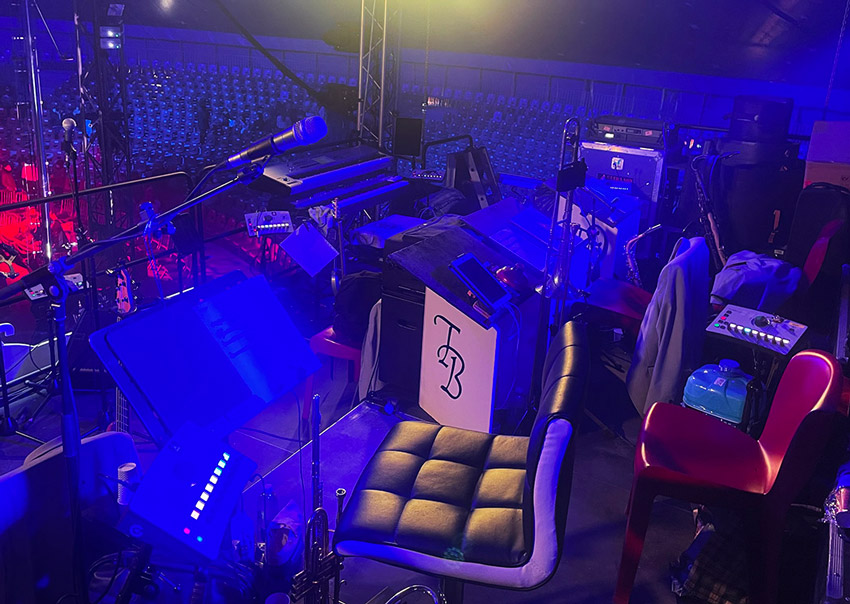
SLU : How do you divide up this phase on site?
Maxime Polak : We always start with the sound, with the band, FoH and monitors. Once we have saved it, we tackle the lighting on its own. We show our ideas to each artist, we approve it together and then they go on the floor so that we can adjust it. It is essential that the beams never bother them. We program each act in its entirety, lighting and sound.
I always watch their acts on YouTube to help me get an idea of what they do, how I can light them and with what colors. It takes about an hour to an hour and a half for each number. Then, as soon as everyone is gone, I scroll through it all again for myself.
Finally, we use social networks. As soon as we have the programming in place, we set up WhatsApp groups and we talk to each other beforehand, we get to know each other and we get organized. The artists send me their links, their music and I show them 3D renderings of the lighting that I envision for them. Once again we save a little bit of precious time.
SLU : What is your production and rehearsal timeframe for this festival ?
Maxime Polak : They arrive on Sunday with their caravans and sometimes a small van for their props.
We rehearse up until Wednesday night, then on Thursday morning, we do a run-through of show A and, on Thursday afternoon, there is a dress rehearsal of show A with schoolchildren in the audience, where it is a good idea not to make any technical mistakes, so that on Thursday evening, we can give the first show A.
The next day, there is a double run-through of the B show and the premiere of the B show that same evening, and so on in alternation. So it’s a very, very intense week for us and for them.
SLU : Where did you learn these concepts, this organization and versatility? How old are you?
Maxime Polak : I’m 31. I learned on the job, since I was a kid, and then I trained myself. I took over my father’s business, which means that I’m constantly working on it and never stop. As soon as there is a new product, I go to the distributors to see and test it and, if I can use it, I buy it. We mix a lot of materials and brands and we also have a store in Gauchy.
SLU : TAre you really more into lighting and video or sound?
Maxime Polak : You have to be versatile and, in terms of the equipment, I’m pretty good at it (laughs), but what I like most is the sound. I’m always working on it because it’s a passion. But it’s the same with circus performers. They have the same passion and they also work non-stop. It’s a good school!
Further information is available on the Ultrason website and on the Massy Circus Festival website



